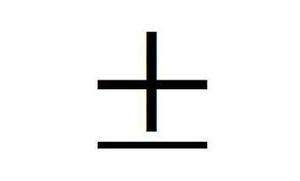head命令的用法是什么?
小编先给大家普及一下什么是head命令:
1、<head> 标签用于定义网页文档的头部,它是所有头部元素的容器。
2、<head> 中的元素可以引用脚本、指示浏览器在哪里找到样式表、提供元信息等等。
3、文档的头部描述了文档的各种属性和信息,包括文档的标题、在 Web 中的位置以及和其他文档的关系等。绝大多数文档头部包含的数据都不会真正作为内容显示给读者。
即head命令用于显示文件的开头的内容。在默认情况下,head命令显示文件的头10行内容。
-n<数字>:指定显示头部内容的行数;
-c<字符数>:指定显示头部内容的字符数;
-v:总是显示文件名的头信息;
-q:不显示文件名的头信息。
小编为大家找到了相关的head命令用法,希望大家可以通过如下的内容能够更好的理解。
NAME
head - output the first part of files
SYNOPSIS
head [OPTION]... [FILE]...
DESCRIPTION
Print the first 10 lines of each FILE to standard output. With more
than one FILE, precede each with a header giving the file name. With
no FILE, or when FILE is -, read standard input.
Mandatory arguments to long options are mandatory for short options
too.
-c, --bytes=[-]N
print the first N bytes of each file; with the leading ‘-’,
print all but the last N bytes of each file
-n, --lines=[-]N
print the first N lines instead of the first 10; with the lead-
ing ‘-’, print all but the last N lines of each file
-q, --quiet, --silent
never print headers giving file names
-v, --verbose
always print headers giving file names
--help display this help and exit
--version
output version information and exit
N may have a multiplier suffix: b 512, k 1024, m 1024*1024.
相关推荐
- 【其他】 WPSrank函数的使用方法 04-19
- 【其他】 WPS日期格式怎么转换 04-19
- 【其他】 WPS日期自动往下排怎么设置 04-19
- 【其他】 WPSExcel怎么添加选项 04-19
- 【其他】 WPSExcel表格怎么翻译 04-19
- 【其他】 WPSExcel怎么分列 04-19
- 【其他】 WPSExcel表格行间距怎么设置 04-19
- 【其他】 WPS文档怎么把图片嵌入表格 04-19
- 【其他】 WPSword怎么转换PDF 04-19
- 【其他】 WPSword文档怎么插视频 04-19
本周热门
-
iphone序列号查询官方入口在哪里 2024/04/11
-
输入手机号一键查询快递入口网址大全 2024/04/11
-
oppo云服务平台登录入口 2020/05/18
-
outlook邮箱怎么改密码 2024/01/02
-
苹果官网序列号查询入口 2023/03/04
-
光信号灯不亮是怎么回事 2024/04/15
-
fishbowl鱼缸测试网址 2024/04/15
-
学信网密码是什么格式 2020/05/19
本月热门
-
iphone序列号查询官方入口在哪里 2024/04/11
-
输入手机号一键查询快递入口网址大全 2024/04/11
-
oppo云服务平台登录入口 2020/05/18
-
fishbowl鱼缸测试网址 2024/04/15
-
outlook邮箱怎么改密码 2024/01/02
-
苹果官网序列号查询入口 2023/03/04
-
光信号灯不亮是怎么回事 2024/04/15
-
学信网密码是什么格式 2020/05/19
-
正负号±怎么打 2024/01/08
-
计算器上各个键的名称及功能介绍大全 2023/02/21











